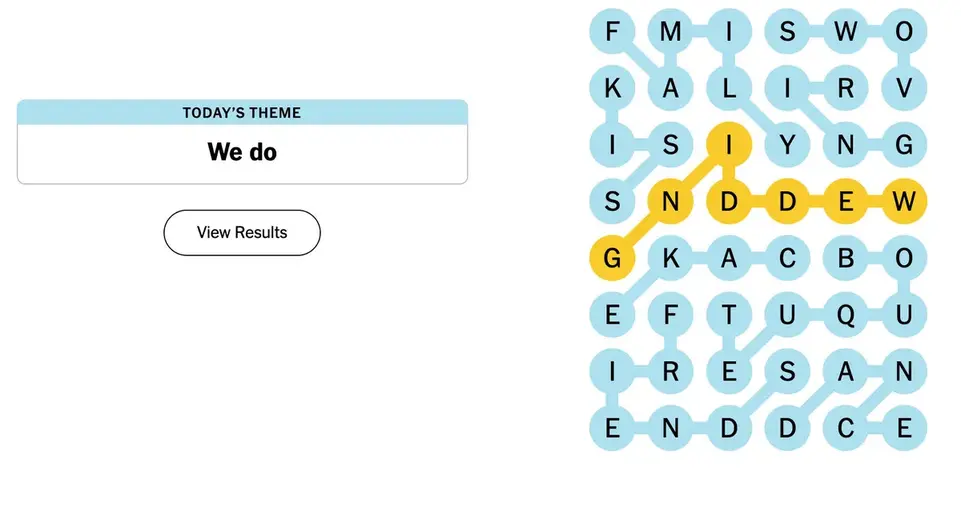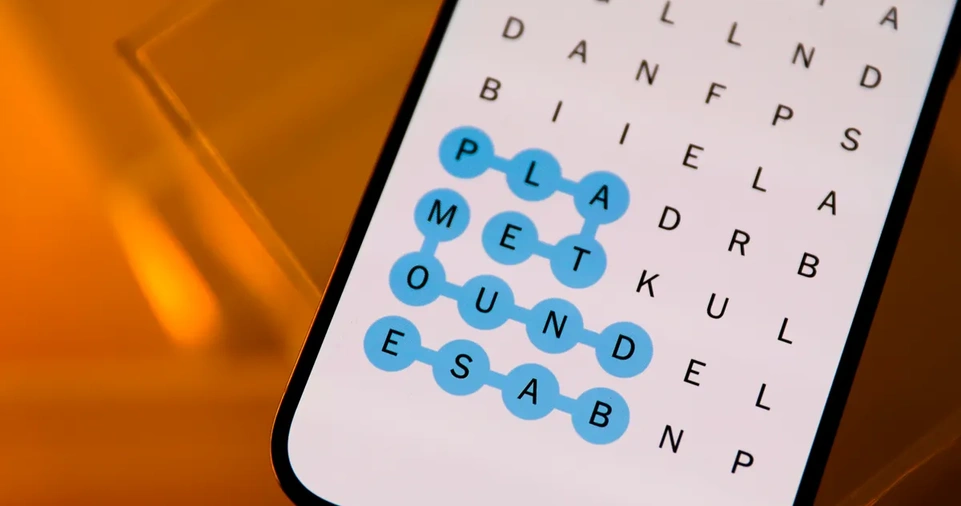Strands puzzles are captivating brain teasers that challenge your logical thinking, spatial reasoning, and problem-solving skills.
They require players to connect dots, align paths, or match colors while adhering to specific rules.
Whether you’re a beginner or an experienced player, learning how to solve these puzzles efficiently can save you time and reduce frustration.
With the right strategies, you can improve both your accuracy and speed, mastering even the most intricate designs.
In this guide, we’ll explore the best tips and techniques to solve strands puzzles faster.
From understanding the rules to leveraging hints and identifying patterns, these strategies will help you tackle any puzzle with confidence.
You’ll also learn how to optimize your approach by breaking down complex sections, visualizing paths, and practicing regularly.
By the end of this article, you’ll be equipped with the knowledge to solve strands puzzles like a pro. Whether for fun or competition, these insights will elevate your puzzle-solving game.
Let’s dive into the detailed strategies for mastering strands puzzles.
Understanding Strands Puzzles
Before jumping into strategies, it’s essential to understand the basics of strands puzzles.
These puzzles come in various formats, but the primary goal is to connect two or more points without violating the rules.
Here are some common features of strands puzzles:
- Paths and Connections: Players must draw lines or paths between points, ensuring no overlaps unless allowed.
- Restrictions: Certain puzzles have rules, such as limiting the number of connections per point or requiring specific patterns.
- Completion Criteria: A puzzle is solved when all points are correctly connected according to the rules.
The variety in designs and difficulty levels makes strands puzzles engaging. However, this diversity also means that strategies must be adaptable.
Top Tips and Strategies for Solving Strands Puzzles

Understand the Rules Thoroughly
Understanding the rules of a strands puzzle is the foundation for solving it efficiently. Every puzzle has unique constraints and objectives.
Here’s how to approach this step:
- Read Instructions Carefully: Spend time reviewing the rules before starting. Look for specific details, such as whether lines can overlap or if certain points require multiple connections.
- Identify Key Elements: Determine what each color, shape, or symbol represents. This knowledge will guide your decisions.
- Visualize the Goal: Picture what a completed puzzle should look like. This mental image will keep you focused on the objective.
Neglecting the rules can lead to wasted time and errors, so take a few moments to understand them fully.
Start with the Simplest Strands
Begin by identifying the easiest or most obvious connections.
These are often the strands with limited options, such as:
- Direct Connections: Strands that clearly lead from one point to another without interference.
- Unique Paths: Connections that are the only possible route for a given point.
Completing these strands early can:
- Reduce the puzzle’s complexity.
- Help you identify patterns or pathways for more challenging sections.
- Create a foundation for solving the entire puzzle.
Starting with simple strands builds momentum and boosts confidence.
Plan Your Moves
Strands puzzles are like chess—planning ahead is crucial.
Here’s how to effectively strategize:
- Visualize Before Drawing: Imagine potential paths in your mind. Consider how they interact with other strands.
- Assess the Impact: Before committing to a move, think about how it will affect other connections.
- Use a Trial-and-Error Approach: If unsure, test a path lightly (or mentally) to see if it works before finalizing it.
Planning prevents mistakes and minimizes the need for backtracking.
Work from the Edges and Corners
Edges and corners often have fewer possibilities, making them easier to solve.
Focus on these areas first:
- Corners: Points at corners usually have only one or two connection options.
- Edges: Paths near the edges are limited compared to the center, simplifying decision-making.
Solving these sections first narrows down possibilities for the rest of the puzzle, making it easier to tackle more complex areas.
Use a Process of Elimination
Ruling out impossible paths is a powerful strategy.
Here’s how to apply this:
- Block Invalid Moves: Identify paths that would make completing the puzzle impossible.
- Focus on Feasible Options: Narrow down the possibilities by eliminating incorrect routes.
- Think About Consequences: If a path blocks another point’s connection, it’s likely incorrect.
Elimination helps you focus on the most promising solutions.
Break Down Complex Sections
When faced with a challenging area, divide it into smaller parts:
- Segment the Puzzle: Focus on one cluster or region at a time.
- Simplify Intersections: Look for ways to resolve overlapping paths step by step.
- Avoid Overthinking: Concentrate on one manageable section before moving on.
This approach prevents feeling overwhelmed and keeps your progress steady.
Look for Patterns and Symmetry
Patterns and symmetry are often embedded in strands puzzles.
Recognizing them can speed up your solving process:
- Symmetrical Designs: Many puzzles are designed symmetrically, which can guide your decisions.
- Repeating Patterns: Look for recurring shapes or paths that simplify the puzzle.
- Mirror Techniques: Use symmetry to predict paths on the opposite side of the puzzle.
Patterns provide shortcuts and make complex puzzles more manageable.
Undo and Reassess
Mistakes are part of the process.
Don’t hesitate to undo your work and try again:
- Backtrack Strategically: Identify where you went wrong and adjust accordingly.
- Reassess with Fresh Eyes: Taking a step back can reveal solutions you missed.
- Use Erasers or Undo Functions: If the puzzle allows it, take advantage of these tools to refine your approach.
Reassessing ensures you stay on the right track.
Practice Visualization
Training your mind to visualize paths can significantly improve your speed:
- Mental Mapping: Practice imagining connections without drawing them.
- Predict Outcomes: Anticipate how each move affects the puzzle.
- Improve Spatial Awareness: Regular practice enhances your ability to see solutions quickly.
Visualization reduces trial and error, saving time.
Time Yourself
Set a timer during practice sessions to track your progress:
- Measure Improvement: See how your solving time decreases over sessions.
- Set Goals: Aim for specific completion times to stay motivated.
- Challenge Yourself: Compete against your personal best or others to enhance your skills.
Tracking time adds an element of fun and keeps you focused.
Leverage Hints or Tools
If the puzzle offers hints, use them wisely:
- Save Hints for Tough Sections: Don’t use hints too early; reserve them for challenging areas.
- Use Highlighting Features: Some puzzles highlight potential moves, making it easier to identify solutions.
- Research Walkthroughs: For particularly tough puzzles, look up guides or tutorials to learn new techniques.
Hints and tools can provide valuable assistance when you’re stuck.
Practice Regularly
Consistency is key to mastering strands puzzles.
Regular practice helps you:
- Recognize Patterns Faster: Familiarity with puzzle designs improves your speed.
- Build Confidence: Frequent practice boosts your problem-solving abilities.
- Enhance Logical Thinking: Puzzles train your brain to think critically and strategically.
The more you practice, the better you’ll become at solving puzzles efficiently.
ALSO READ:
Conclusion
Solving strands puzzles faster is a skill that combines strategy, practice, and patience.
By understanding the rules, starting with simple strands, planning your moves, and leveraging symmetry, you can significantly improve your efficiency.
Breaking down complex sections, using hints, and practicing visualization will further enhance your problem-solving abilities.
Remember, mastering strands puzzles takes time, but with consistent effort and the right techniques, you’ll find yourself solving even the most challenging puzzles with ease.
Whether you’re solving for fun or honing your skills for competitive purposes, these strategies will set you on the path to success.
Start practicing today and watch your speed and confidence soar!

